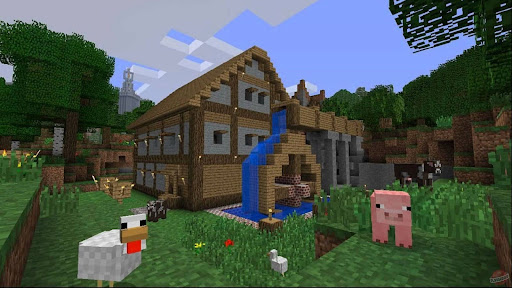Video games today stand as one of the most versatile forms of storytelling, merging interactivity, technology, and creativity into a single medium. What began as simple pixel adventures has evolved into complex worlds filled with intricate plots, emotional depth, and player choice. Developers now face a crucial question: how much control should a player have over the story? Some games provide a sandbox environment where creativity flourishes without restriction, while others guide players through meticulously crafted linear narratives that prioritize emotional impact. Understanding the strengths and weaknesses of each approach helps explain what keeps players immersed and emotionally invested for hours — or even years. Both storytelling methods have distinct psychological effects on players, shaping how they perceive their role within a virtual world and how long they remain engaged.
The appeal of sandbox storytelling
Sandbox storytelling represents the purest form of player agency, allowing users to define their journey rather than follow a pre-written script. In these open environments, players are given tools, systems, and mechanics but not strict instructions on how to use them. Games like Minecraft, No Man’s Sky, and The Legend of Zelda: Tears of the Kingdom demonstrate the power of emergent gameplay — stories created not by writers, but by the players themselves. Each moment of discovery feels organic, shaped by curiosity and imagination rather than imposed structure. The world becomes a blank canvas for experimentation, where cause and effect form a living narrative.
This form of storytelling appeals to players who value freedom and creativity above all else. Building, exploring, or surviving in vast, unpredictable landscapes gives players a sense of true ownership over their actions and achievements. It transforms gaming from a guided experience into a collaborative act of creation between player and developer. The unpredictability of sandbox gameplay — weather systems, AI behavior, player interactions — ensures that no two playthroughs are identical. Moreover, sandbox games often foster strong community engagement, with players sharing their builds, mods, and stories online, turning individual creativity into collective storytelling. The ability to combine exploration, problem-solving, and creation makes sandbox storytelling one of the most dynamic and enduring forms of engagement in the gaming industry.
Immersion through structure: the strengths of linear storytelling

Linear storytelling, in contrast, prioritizes carefully crafted structure, pacing, and emotional delivery. In these experiences, every moment is designed to serve a purpose within the overarching narrative. Games like The Last of Us Part II, God of War: Ragnarök, and Bioshock Infinite are prime examples of how controlled direction can result in unforgettable emotional experiences. Developers have full control over timing, dialogue, and dramatic tension, ensuring that players experience powerful emotional highs and lows exactly as intended. Linear storytelling transforms the player into an active participant in a cinematic journey rather than a free agent exploring possibilities.
This structured approach is especially effective in delivering deep character development and thematic storytelling. Players don’t need to search for meaning — it unfolds naturally through writing, acting, and gameplay design. The sense of purpose and direction in linear games often makes the emotional journey feel more impactful, as each scene contributes to a cohesive narrative arc. Even though players have limited freedom, their actions carry weight within the story’s framework, reinforcing immersion and empathy. The linear model also allows developers to experiment with film-like techniques such as camera composition, dialogue pacing, and music cues that amplify dramatic tension.
If you enjoy exploring rich game worlds while keeping up with live esports and immersive competitions, you can always cs2 watch live to see how structured gameplay meets spontaneous decision-making. Watching professional players adapt in real time mirrors the emotional pacing of linear games, where every move matters, and tension builds toward a decisive climax. This balance between control and unpredictability reflects what makes linear storytelling so captivating — a carefully guided experience that still keeps the player on edge, anticipating the next emotional turn.
Player engagement and emotional investment
Player engagement depends on how effectively a game captures the player’s attention and sustains it through emotional or intellectual stimulation. In sandbox games, engagement is built upon freedom and self-motivation. Players decide their goals — constructing a massive base, exploring hidden ruins, or mastering in-game systems — which makes achievements feel personally earned. This autonomy taps into the psychology of intrinsic motivation, where satisfaction comes not from rewards but from the sense of control and accomplishment. The unpredictability and openness of sandbox games provide continuous stimulation, turning the world into a playground of endless possibilities.
Linear games, however, generate engagement through storytelling precision and emotional intensity. Carefully written characters, moral dilemmas, and escalating conflicts keep players emotionally tied to the outcome. Games like Life is Strange or Detroit: Become Human demonstrate how narrative choices — even within structured frameworks — can make players question their values and decisions. The sense of anticipation and empathy built through linear storytelling can be as powerful as the freedom of an open world. In fact, research on player psychology suggests that engagement peaks when players experience a blend of autonomy and narrative immersion. Many modern titles attempt to harness this balance, combining player choice with story-driven moments that create emotional payoffs and memorable experiences.
Hybrid models: finding the balance
As the industry matures, developers increasingly strive to blend the best aspects of both sandbox and linear storytelling. Games like Red Dead Redemption 2, Cyberpunk 2077, and Horizon Forbidden West illustrate how this balance can create experiences that are both personal and narratively cohesive. Players are free to explore vast, interactive environments, but their choices also influence story progression and character relationships. These hybrid systems encourage players to feel both empowered and emotionally connected — a combination that significantly boosts engagement and replay value.
To achieve this, developers use branching storylines, adaptive dialogue, and dynamic world systems that react to player behavior. The world itself becomes a narrative mechanism, responding to decisions in subtle or dramatic ways. This sense of consequence keeps players invested in both the gameplay and the story. Hybrid games also benefit from technological advances — improved AI, procedural generation, and real-time rendering — that allow developers to seamlessly merge cinematic storytelling with open-ended exploration. The result is a fluid narrative experience that caters to different player preferences, maintaining emotional depth without sacrificing creative freedom. This balance is becoming a defining feature of next-generation games, representing the future direction of interactive storytelling.
Conclusion
In the end, the question of which storytelling method engages players more — sandbox or linear — doesn’t have a single definitive answer. Each approach appeals to different psychological needs and player archetypes. Sandbox games attract those who thrive on creativity, discovery, and autonomy, while linear games captivate players who crave emotional connection, strong direction, and cohesive narrative arcs. What truly matters is how effectively a game leverages its chosen structure to evoke emotion and sustain curiosity. Both approaches can be equally powerful when executed with care and vision.
The most engaging titles today often blend both worlds — giving players freedom to explore while guiding them through emotionally charged storylines. This synthesis reflects a larger trend in modern gaming: a shift from rigid design toward adaptive, player-centered storytelling. As technology continues to evolve, future games will likely push these boundaries even further, crafting experiences that are not only immersive but also deeply personal. Whether you prefer the open canvas of a sandbox or the emotional precision of a linear tale, one thing remains certain — storytelling in gaming will continue to redefine how players connect with digital worlds.


